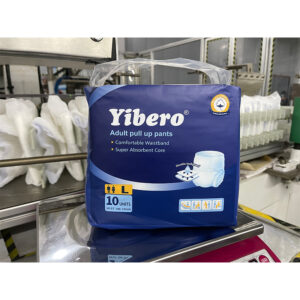Choosing the appropriate size and type of butterfly valve for your application depends on several factors, including the flow rate, pressure, temperature, and the type of fluid being transported.
Here are some steps you can follow to determine the appropriate size and type of butterfly valve for your application:
Determine the flow rate: Determine the flow rate of the fluid that will be passing through the valve, measured in gallons per minute (GPM) or liters per minute (LPM). This will help you determine the appropriate size of the valve.
Calculate the pressure drop: Calculate the pressure drop across the valve, which is the difference between the pressure upstream and downstream of the valve. This will help you determine the appropriate pressure rating for the valve.
Consider the temperature: Consider the temperature of the fluid being transported and choose a valve that is rated for the appropriate temperature range.
Determine the type of fluid: Determine the type of fluid being transported, including its chemical properties and viscosity. Choose a valve that is compatible with the type of fluid and can handle its specific properties.
Consult with a valve specialist: Consult with a qualified valve specialist or engineer who can help you select the appropriate size and type of butterfly valve for your specific application.
In addition to these steps, it’s important to consider the specific requirements of your application, such as space limitations, installation requirements, and maintenance needs. By taking these factors into account, you can select a butterfly valve that is appropriate for your application and will perform reliably over time.
What are some common types of butterfly valves and their applications?
Butterfly valves come in different types, each with their own unique features and applications.
Here are some of the most common types of butterfly valves and their applications:
Wafer-style butterfly valve: Wafer-style butterfly valves are designed to fit between two flanges and are used in applications where space is limited. China adult diaper suppliers They are often used in HVAC systems, water treatment plants, and fire protection systems.
Lug-style butterfly valve: Lug-style butterfly valves have threaded inserts at each end and are used in applications where the valve needs to be removed without disrupting the piping system. They are often used in industrial and chemical processing applications.
Flanged butterfly valve: Flanged butterfly valves have flanges at each end and are used in applications where high pressure or high temperature fluids are being transported. They are often used in petrochemical plants, power generation facilities, and oil and gas pipelines.
Double-offset butterfly valve: Double-offset butterfly valves have a more complex design than standard butterfly valves, with a disc that is offset from the centerline of the valve body. This design reduces wear and tear on the valve disc and seat, making them ideal for high-cycle applications. They are often used in chemical processing, power generation, and water treatment applications.
Triple-offset butterfly valve: Triple-offset butterfly valves have a more advanced design than double-offset butterfly valves, with a disc that is offset from the centerline of the valve body in three directions. This design minimizes friction and wear, making them ideal for high-temperature and high-pressure applications. They are often used in oil and gas pipelines, petrochemical plants, and power generation facilities.
Overall, butterfly valves are versatile and can be used in a wide range of applications. The specific type of butterfly valve you choose will depend on the specific requirements of your application, such as pressure, temperature, and the type of fluid being transported. It’s important to consult with a qualified engineer or valve specialist to determine the best type of valve for your needs.
